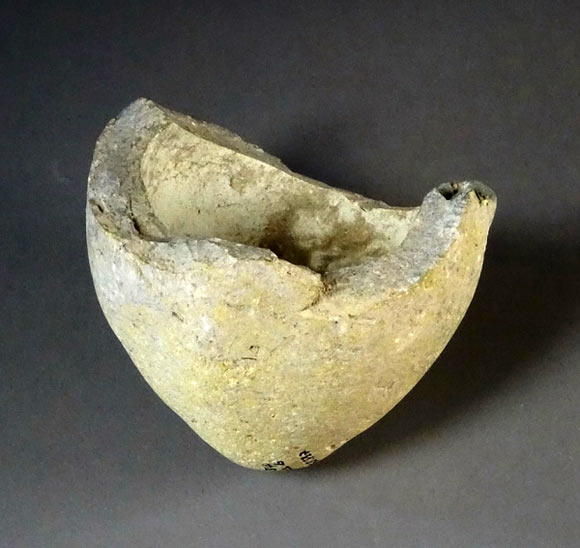Archaeologists have studied the remains of four ceramic pots from the collection of the Royal Ontario Museum. They were found in the vicinity of the Armenian Garden in Jerusalem, they are dated to the 11th-12th centuries.
This is reported by the site Science.News.
One of the shards was made of a stone spherical-conical vessel with very thick walls and no decor; it may have contained the chemical ingredients – including fatty acids, mercury, sulfur, aluminum, potassium, magnesium, nitrates and phosphorus – of an explosive device.
Scientists suggest that the pot was something like a hand grenade, which was used in the defense of Jerusalem from the Crusaders.
“There is evidence that during the Crusades, these pots were dropped like grenades near the Crusaders, resulting in loud noises and bright flashes of light,” says molecular archaeologist Carney Matheson of Griffith University in Australia.
The assumption about the combat purpose of the clay pot is confirmed not only by the analysis of its contents. According to scientists, the shape and thickness of the walls of the pot support this hypothesis.
The vessel is a sort of medieval hand grenade thrown by Saladin’s troops during the siege of Jerusalem in 1187 CE. The find confirms experts’ claims that hand-held explosive devices were used during the Crusades, but the recipe never made it beyond the Middle East and North Africa.
Spherical and conical ceramic vessels dating from the 9th to 15th centuries are widespread in the Middle East, but the reason for their use is still debated. They are thought to have stored mercury for mining and medical use, beer, and aromatic oils.
Dr. Carney Matheson of Griffith University analyzed the remains inside four such vessels found in the Armenian gardens of Jerusalem in a layer dating from the 11th-12th centuries. Each of them has a different chemical composition, supporting the idea that these vessels had different uses.
One of the four, called “shard 737”, is undoubtedly the most significant: it contains a combustible mixture that was used as an explosive. Remarkably, this explosive was not imported from China, where gunpowder had been used since at least the 9th century, but was locally produced.
“Shard 737” contained traces of sulfur, mercury, magnesium and nitrates, suggesting a sophisticated explosive device very different from black powder. Magnesium, for example, could well have come from the Dead Sea, where it was mined at the time.
During the Crusades, these vessels were used in the form of grenades thrown into the fortresses of the Crusaders. They produced loud sounds and bright flashes of light.
Some researchers have suggested that the vessels were used as grenades containing black powder, an explosive invented in ancient China and known to have been introduced to the Middle East and Europe in the 13th century. And, as scientists suggested, it could have been brought to the Middle East earlier, already in these vessels of the 9th-11th centuries.
Arabic texts of the time mention recipes for explosives, but they have proven difficult to reproduce. It was a secret weapon and they didn’t want to tell everyone exactly how to make it. Modern translations may not be entirely reliable, and every recipe is different.












